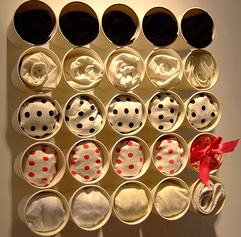Dimensions of Creativity: Originality
Intro • Fluency • Flexibility • Originality • Elaboration Originality: ability to generate a product or idea that is unique or very unusual, unexpected, first of its kind. E.g. oxymorons, juxtapositions, unprompted shifts in time/place/role/capabilities, unique combinations Originality is the pinnacle of creativity. Often it is a someone's spontaneous originality that makes us call him/her "creative." Of the four FFOE skills, originality is most difficult to force but can be REINforced. Originality by definition means producing ideas and products that have not existed before, but we judge it in relative terms. If a second grader has never been exposed to an idea before and comes up with it on her own, she is displaying originality. It often grows out of fluency and flexibility (especially odd juxtapositions and combinations) and involves the greatest risk taking of all creativity skills. Open acceptance and respect for original ideas is vital to developing and maintaining students' originality. How peers and teachers react to ideas can make or break originality. Why does originality matter? Originality is the crux of innovation and the most fragile in school settings where we have “answers.” Most students will keep original thoughts to themselves for fear of being deemed "weird" by peers or "inappropriate" by teachers. Originality Builders Prompt with odd juxtapositions, situations (such as flexibility prompts). Ask students themselves to think of the other time, place, person, audience to make their project original. Gradually wean them from prompts to more open-ended options as their originality grows. Stop class to applaud original ideas: " Did you hear what Sam said? Had you ever thought of it that way? What an original idea!" Many flexibility builders can grow into originality builders. Others:
Originality tools on the web: Any tool that provides completely open creation of products "from scratch" can be used to generate and build originality.
Image credit: 'DSCF0540'; http://www.flickr.com/photos/49304189@N00/1947202063; by: Jornny Liu. Released under a Creative Commons Attribution-NonCommercial License. |
- Home
- Classroom Resources
- Classroom Resources
- Classroom Resources
- Bulletin Board Hangups
- BYOD Dream Tools
- Classroom Connection Events
- Classroom Planning Calendar
- Keyword Search
- CurriConnects
- Browse by Subject
- Instructional Units
- Lesson Plans
- MySciLife®
- Reading Treks
- Reading Suggestions
- Ready to Go
- Special Topics
- XW1W
- Professional Learning
- Professional Learning
- Professional Learning
- Adapt-a-strategy
- Blog Basics for the Classroom
- Book Club
- Book Study
- Building Schoolwide Literacy
- Classroom Management
- Cycles Vs. Checklists
- Differentiated Instruction
- Dimensions of Creativity
- Hands off, Vanna!
- Infographics
- Instructional Playlists
- Middle School Dos and Don’ts
- Nourishing Gifted
- OK2Ask
- Professional Learning Log
- Rubrics to the Rescue
- Student Produced Video Field Trip
- TF Professional Exclusives
- Twitter for Teachers
- Twitter Chats
- Webquest 101
- Wiki Walkthrough
- Writers Workshop
- Professional Resources
- Professional Resources
- Professional Resources
- Blog Basics for the Classroom
- Help! I Lost my Media Specialist
- Must Knows
- Newbies/Substitutes
- OK2Ask®
- Outside Sources
- Reading for All
- Resources for Teaching Remotely
- Rubrics to the Rescue
- Tech How & Why
- TF Professional Exclusives
- Timesavers
- Wiki Walk-Through
- Working with Parents
- What's Hot
- What's Hot
- What's Hot
- BYOD Dream Tools
- Featured Sites
- Featured Sites Archive
- TeachersFirst Edge
- TF Update
- TF Update Archives
- What's Popular
- Weeklies
- Blog
- Blog
- Blog
- About Us
